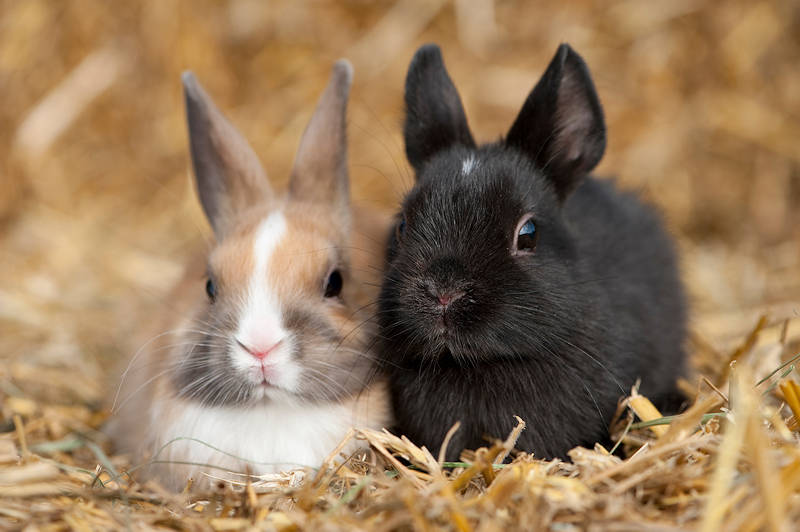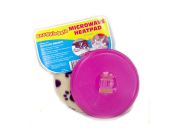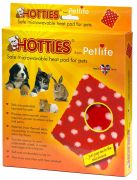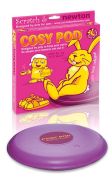Whats Hot and What's ... Brrrr!

What's Hot - and What's Not?
Help to Keep Your Little Ones Warm this Winter
Whilst it's been a long time coming, it looks like winter is finally here. Just when plants in the garden being to sprout too - how typical!!
For those housed outside, the cold months can be a challenge. You've probably already got your cold weather plans ready, but we thought we'd put together a 'What's Hot and What's Not' winter guide as a reminder to help keep the little ones warm now the thermometer is plummeting.
Winter Coat - Hot
If your little ones have been outside year-round, they will naturally develop a winter coat as the weather eases from summer to the cooler months.
However, do bear in mind that this winter has been uncharacteristically warm so far, so their winter coat may not have reached 'full snuggle' yet. They may well require extra insulation, and perhaps more than you normally give.
No Winter Coat - Not Hot
It's too late to move rabbits from the warmth of the house to outside accommodation. Their winter coats will not have had time develop enough to help them keep warm. The best time to move your little ones to external accommodation, if you need to, is early summer. They should then have enough time to shed their summer coat and develop a warmer coat as the summer evenings get shorter and cooler.
Straw - Hot
Straw is an excellent insulator (that's why it's often used in walls in environmental homes!). Pack an area full of straw, so they can go snuggle when they feel chilly. If their environment doesn't have a suitable room, then why not add a cardboard box filled with straw into their area. The cardboard itself will also help with the insulation. Don't forget that two holes are better than one in rabbit world, as they prefer an extra escape route - just in case!
Wispy Hay - Not Hot
Whilst hay can act as an insulator, it is definitely not as good as straw, but if you need to use hay, then use a good quantity, and reasonably dense too. The little ones will make a burrow through it.
Hutch Cover - Hot
Extra insulation can be added around the outside of the hutch too. Whilst your hutch manufacturer will probably sell a bespoke cover for your hutch, there are a number of things that can also be used - a blanket, sleeping bag, insulation panels for example. Just make sure the cover is well out of nibble reach and, of course, the hutch remains fully ventilated.
Soggy Hutch Cover - Not Hot
Whilst using a hutch insulating cover is great, it must be kept dry at all times. If you're using a blanket or sleeping bag to help keep the hutch warm, they will act just like a fridge if they get wet - and more like a freezer if the temperature falls below zero. A plastic sheet over the cover will work perfectly well. Again, ensure ventilation and the sheet is out of nibble reach. Make sure both cover and waterproofing remain securely attached to the hutch so they cannot get moved in bad weather.
A Dry Inside - Hot
Keeping the hutch dry inside will make a big difference to the temperature inside. Damp bedding will cool the area, so remove wet bedding as often as possible during the day.
Damp Inside the Hutch - Definitely Not Hot!
A damp hutch will be very chilly - and increase the risk of health issues, of course. Other than the litter area, hutches can get damp from leaky bottles, spilled water bowls and rain getting in via the roof or open side. Check bottles daily and replace as necessary. If using a water bowl, make sure it is not located in an area where it could easily get knocked, and is heavy enough not to become a play-thing (yes....they do that!!). If rain is getting in, perhaps think about relocating the hutch to a more sheltered area where possible, or turning the open side away from the downpour.
Low Level Heating. Oh, so lovely & Hot!
There are a number of products available that make it easy and quick to add an area of heat outdoors. The simplest, requiring no electricity and being totally safe (even if chewed) is the small animal heatpad. They are warmed through the microwave, and warmth can last for several hours. They are generally supplied with a cover to prevent scalding. Even if you find your little ones do not directly sit on the heatpad, being near will also benefit them. Oil filled radiators are another good way of providing low-cost, background heat, but most require a power source which adds a safety concern from electrical cables. These should be kept well away from your little ones and be encased, so they cannot be chewed.
Blast Heating. Not hot.
Using gas burners or fan heaters - unless for a very short (supervised) time, or on the lowest setting when very cold and only when fully supervised, is not recommended as the heating could be too much, and be unsafe if left. Gentle, constant heat is better and way safer.
Move to an Outhouse - Hot
If you can relocate the hutch temporarily into a shed or outhouse, that would be great - also good for when the storms come!
Moving the Hutch next to the car in the garage - Not Hot
Unless, of course, your car is not being used at all! Car fumes, even for a short time, are not good for bunnies, plus the chemical petrol/oil smell will be absorbed by the hay and bedding and not be pleasant!
A little extra food - Hot
When it gets cold, your little ones may need a little extra food to help them keep warm - the extra calories consumed will be burned off by the body. It's a good idea to monitor their weight on a weekly basis if you can. Any change in weight needs investigating and sudden weight loss should be discussed with your vet.
A lot of extra food - Not Hot!
Whilst a little extra nutrition may be required, it's still very important to maintain a good (and high!) hay intake for dental and digestive health.




